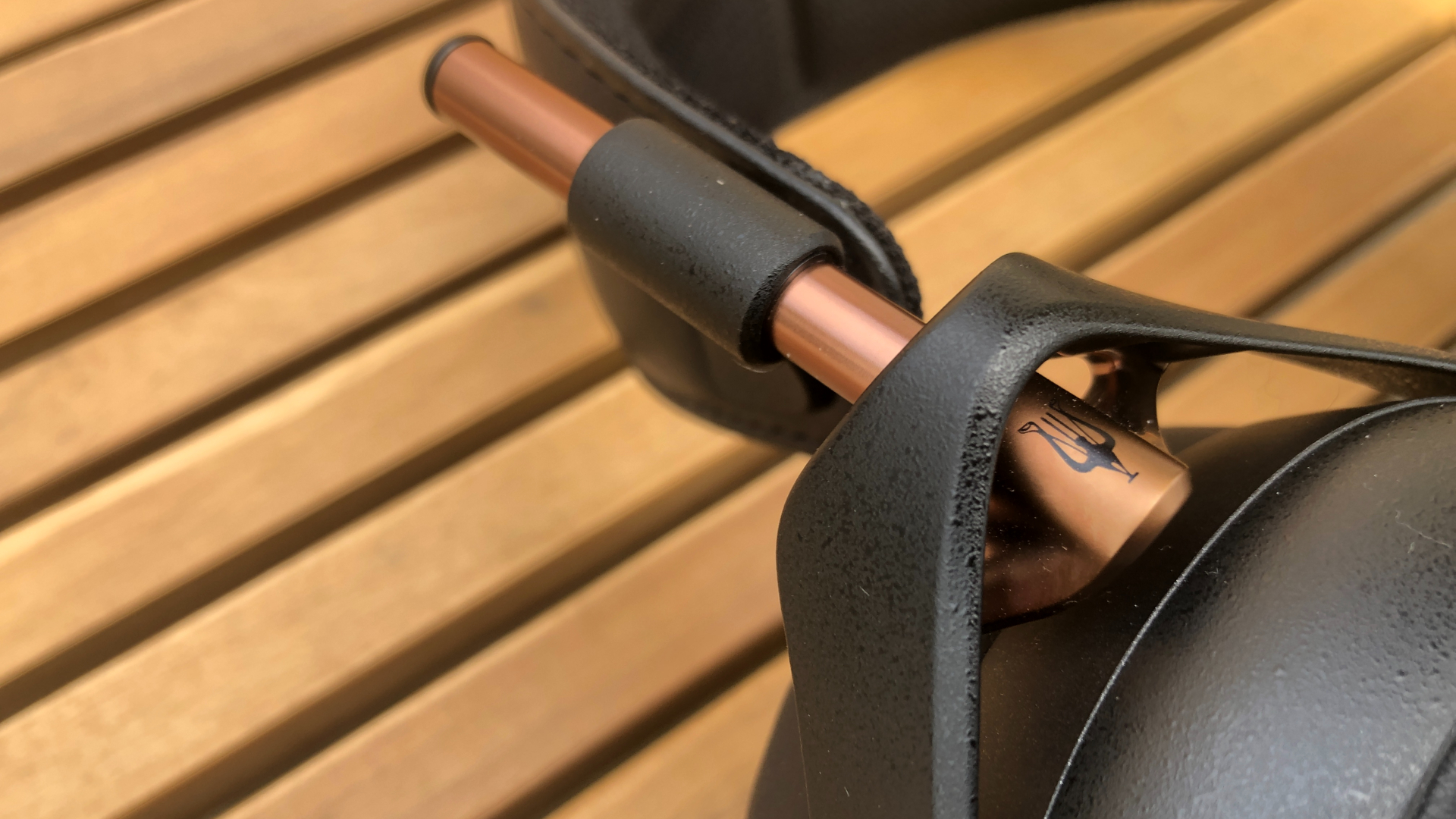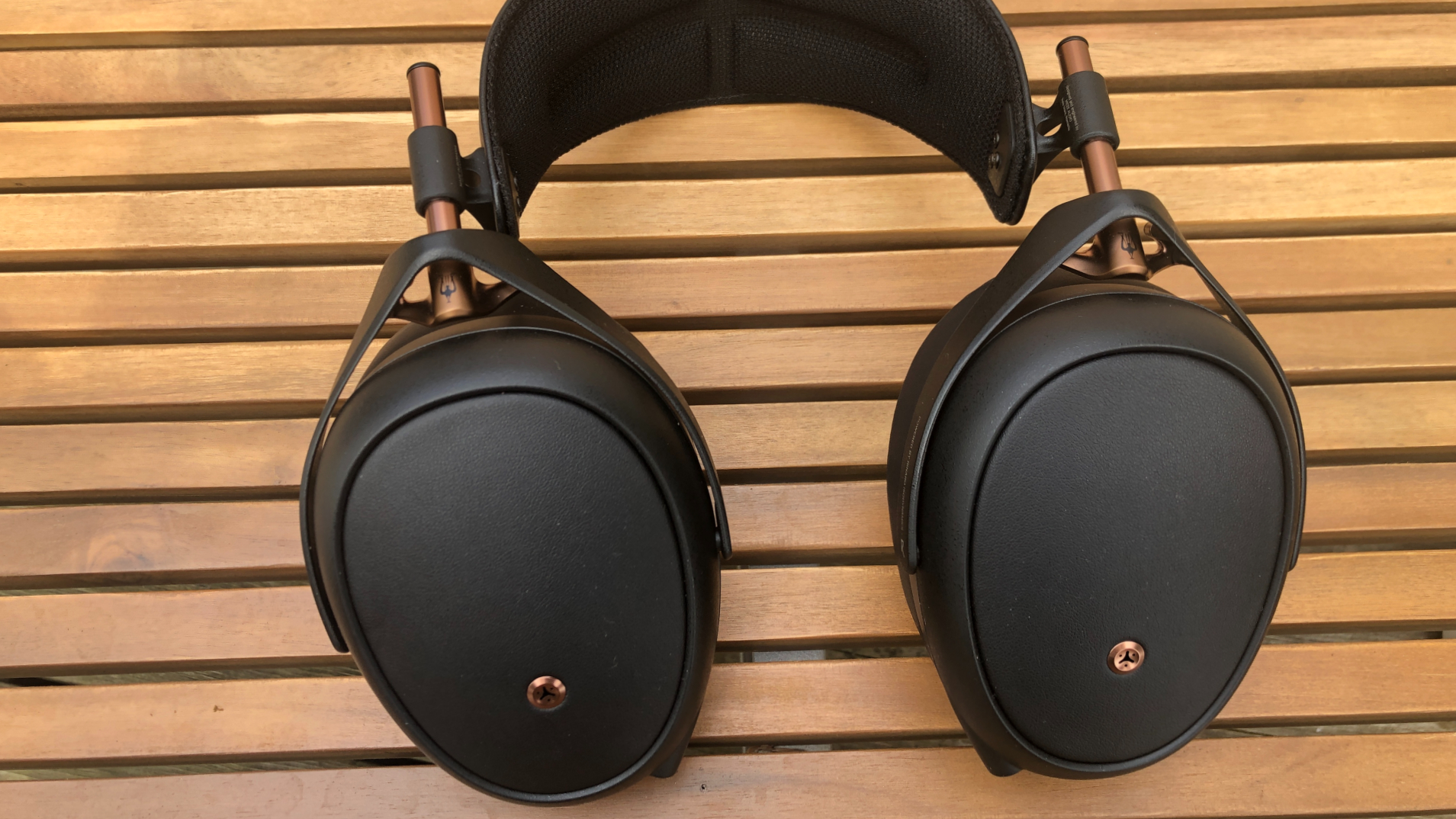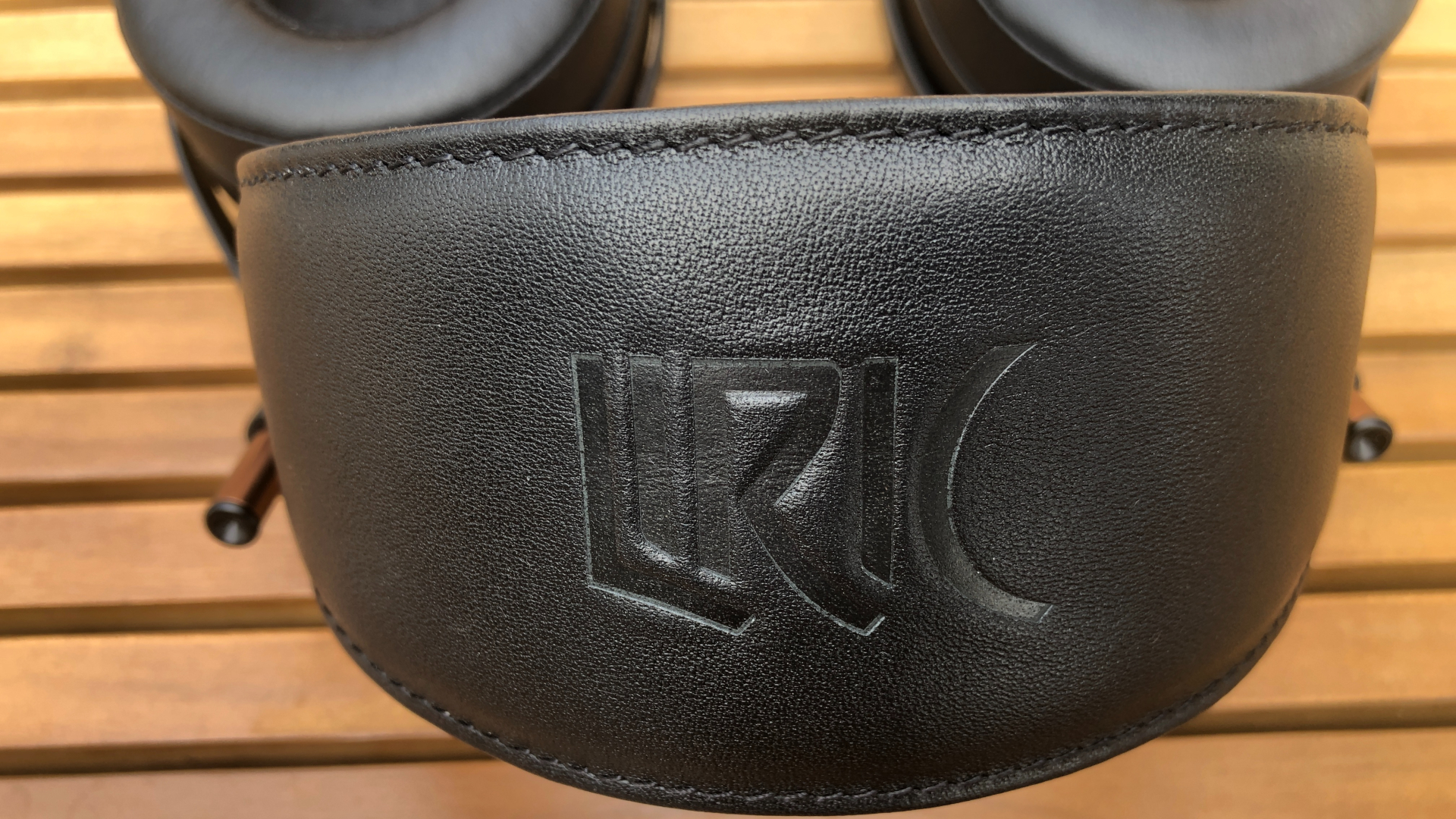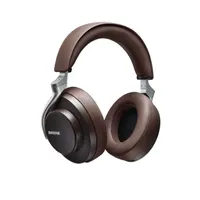TechRadar Verdict
The Meze Audio Liric's price and configuration means they aren’t for everyone – you'll need as much investment in feeding them as you have in the headphones themselves. If they suit your purposes, though, you’re in for a treat.
Pros
- +
Confident, precise and revealing sound
- +
Remarkable sonic control and positivity
- +
Reassuring build quality
Cons
- -
Not the weightiest listen
- -
Intolerant of poor sources of music
- -
Sizeable case
Why you can trust TechRadar
Meze Audio Liric: one-minute review
Extended functionality? Nope. Mainstream pricing? Hardly. Adaptable or undemanding? Not a chance. You don’t get pampered by the Meze Audio Liric wired over-ear headphones, except in one regard. Buy a pair and it’s you who’ll be doing most of the pampering.
A considerable amount of money put Meze Audio’s way buys an old-fashioned product. The Liric are big, hard-wired headphones fitted with esoteric planar magnetic drivers – and though their closed-back configuration and (laughably big) carry-case makes them better for portable listening than most Meze Audio over-ear headphones, they’re neither discreet nor especially portable.
They’re beautifully made, though, from high-quality materials. And if there's anything you take away from this Meze Audio Liric review, it should be that they sound – with one caveat – superb. If it’s detail you want, a proper reading of a recording as a performance, insight into tone and timbre and shape of individual notes, you’ve come to the right place. The Liric are a convincing and utterly musical listen, and rank among the best over-ear headphones for sheer fidelity.
They’re not the punchiest or weightiest headphones around, mind, and for some listeners that’s not going to fly. But if you can live with rather modest low-frequency presence, the Meze Audio Liric are money very well spent.
Meze Audio Liric: price and release date
- $1,999 / £1,799 / AU$3,399
- Released in November 2021
The Meze Audio Liric are available to buy now, and in the United Kingdom you’ll need to part with £1,799 to secure a pair. The equivalent in the United States is $1,999, while in Australia they cost around AU$3,399.
‘Not cheap’, then, is to understate Meze Audio's pricing strategy somewhat. Just because the company sells headphones that cost more than twice this amount, there’s no avoiding the fact you can have very nearly five pairs of Sony WH-1000XM5 for the same outlay. How on Earth, then, does Meze Audio justify the asking price?

Meze Audio Liric: design and features
- Premium materials, carefully assembled
- Feel lighter than their 391g
- Won’t suit the larger-eared listener
If you thought a premium price means extended functionality, think again. The Meze Audio Liric are headphones – you put them on your head, physically attach them to your source of music, and then listen. There is no voice-assistance, no active noise-cancellation… just a cable from each earcup at one end and a 3.5mm connection at the other.
Sign up for breaking news, reviews, opinion, top tech deals, and more.
Two cables are provided in the frankly huge hard-shell carry-case the Liric arrive in: one of 1.5m, the other 3m long. They’re both robust, and both feature sturdy and quite glitzy terminations. As far as attention to detail and perceived value go, there’s obviously been some effort made.
The headphones themselves are an equally upmarket proposition. By carefully combining leather, aluminium, magnesium and steel, Meze Audio has produced what is, by prevailing standards, a good-looking and tactile pair of headphones. The headband/hanger mechanism distributes their 391g weight evenly and comfortably, the exposed adjustment mechanism feels built to last, and clamping force is very nicely judged. The plump earpads are fairly narrow, though - anyone with ears only modestly larger than average is going to find the fit rather snug.
The Liric are a fair bit more coherent, in design terms, than some of Meze Audio’s other models – often the company seems to throw all the textures, all the materials and all the patterns at its headphones, but not here. But if we have a proper criticism of the design, it’s worth noting the Liric don’t fold. That’s why their (equally tactile) carry-case is such a beefcake. ‘Closed-back’ is great for portability credentials, but ‘massive case’ is not.
Not for the first time where its more expensive products are concerned, Meze Audio has engaged the services of Ukrainian specialist Rinaro Isodynamics to help at the business end. Rinaro has built a significant reputation for planar magnetic drivers over a number of decades, and for the Liric it’s come up with the MZ4.
MZ4 is a 92 x 63mm elliptic planar magnetic driver, a remarkably light diaphragm with two distinct coil arrangements stamped on it. The lower half features a spiral coil that handles midrange frequencies and above – its position puts it pretty much directly over the wearer’s ear canal.
From here, the theory goes, it negates the tendency for sound to become hazy if soundwave length is shorter than the physical depth of the earpad, which should result in greater sonic precision and focus. The upper portion of the driver has a switchback coil which deals with all the remaining information (the lower frequencies, basically).
Most other headphones require further explanation. The control app, the touch-controls, the battery life and what-have-you will all need discussion. But the Meze Audio Liric do without all this stuff. They have one job, and they’re engineered and specified to do it properly.

Meze Audio Liric: audio performance
- Detailed to an almost comical degree
- Eloquently communicative
- Not as burly a listen as you might be expecting
First things first: don’t expect to be blown away by nearly two grand’s-worth of headphone prowess if you’re attaching them to a mediocre source of music. Spotify free-tier subscribers, owners of virtually all smartphones that still have a physical headphone connection, folks who want to hook them straight into the side of their laptop should all a) look elsewhere, and b) spend much less money on headphones. The Liric are unapologetically intolerant of all of this.
Subscribers to high-tier streaming services, owners of dedicated digital audio players and those who understand the need for a dedicated headphone DAC or amp when using a laptop as a source, though, can read on. Treat the Meze Audio with a degree of care and the rewards are both immediate and considerable.
Acoustic design: Closed-back, over-ear
Weight: 391g
Drivers: Planar magnetic
Cables: 1.5m, 3m
Connection: 3.5mm jack (6.3mm adaptor supplied)
Most immediately striking is the way the Liric open up a recording in order to make space for the extraordinary amount of detail they retain. No element of a song is too minor or too transient to escape the attentions of these headphones – the attack and decay of the percussive elements of PJ Harvey’s 50ft Queenie, for instance, is absolutely crammed with information. Be in no doubt: if it comes into these headphones in the first place, it will all come out again.
Their dynamism, whether shifting from the dark silences and howling assaults of that song or describing the tiny harmonic variations in Nils Frahm’s In the Sky and On the Ground, is unquestionable. Their eloquence through the midrange, where virtually every singer’s voice sits and that’s critical to the emotional and attitudinal impact of a recording, is enormous. And despite what might read like a rather analytical outlook, the Liric unify every individual strand of a recording into a single, self-contained and entirely persuasive whole.
There’s impressive clarity and consistent tonality throughout the frequency range. The lowest frequencies, though, pose the only problem the Meze Audio aren’t able to solve decisively. Bass sounds are just as nicely shaped, just as lavishly detailed and just as out-and-out musical as everything that happens above them – but they don’t carry as much weight as might be ideal.
The Liric don’t want for momentum, but they lack that low-end presence and authority that some music (and you know the sort) is built on. If your tastes lean towards ‘punchy’ in terms of presentation, you’ll need to give these headphones a long, hard listen before committing.
The rest of us, though, will be sold after just a short listen. That’s how good these headphones are.

Should I buy Meze Audio Liric?
Buy them if...
You want an explicit description of your music
The Liric are as detailed and revealing as any headphones at anything like the price.
You don’t take much carry-on luggage
The carry-case these headphones travel in is almost comically large.
Your music source is equally talented
Don’t expect the Liric to make a silk purse out of your sow’s ear of a laptop headphone socket.
Don't buy them if...
You're on a budget
You’ll need to have spent equally big on a source player or headphone amp to hear the Liric at their best.
You think you know what ‘portable’ means
Turns out you don’t.
You celebrate in a wider ear
Quite big earcups, quite narrow earpads. Go figure.
Also consider
Think the Meze Audio Liric might not be the audiophile over-ears for you? That's OK, here are three alternative wired high-end options that might offer just the combination of sophisticated style and sound quality you're looking for.
Beyerdynamic DT 1990 Pro
Beyerdynamic may not be as well known as its German sibling, Sennheiser, but the audio company has a history of creating some of the best-sounding audio gear on the market – and the Beyerdynamic DT 1990 Pro, an open-back version of the Beyerdynamic DT 1770 Pro, sits at the very top of the pile. Quite simply, the DT 1990 Pro are the best over-ear headphones, in our opinion, as long as you're aware that others will also be able to hear your music…
Sennheiser HD 800
The Sennheiser HD 800 are, hands down, some of the best-sounding pairs of over-ear headphones on the planet, affectionately praised by inner circles of audiophiles the world over – and you'll pay a pretty penny for them. During our testing, we found that when paired with the proper hardware, they sound absolutely excellent and balanced in every way. Offering incredibly detailed sound that will lead you to ignoring your regular speakers, these are some fantastic headphones that also feel great to wear.
Shure AONIC 50
And now, a premium wireless option. The Shure AONIC 50 sport an active noise-cancelling over-ear design. Bluetooth 5 connectivity means you get a decent 20 hours of battery life, as well as support every worthwhile codec including aptX HD, LDAC and aptX Low Latency. 10 stages of environment mode amplification along with two types of noise cancellation provide some extra options to boot. While you won't find every feature under the sun (there are no touch controls or auto-off feature) the Shure AONIC 50 are laser-focused on delivering the best sound-quality of almost any noise-cancelling headphone.
First reviewed: May 2022

Simon Lucas is a senior editorial professional with deep experience of print/digital publishing and the consumer electronics landscape. Based in Brighton, Simon worked at TechRadar's sister site What HiFi? for a number of years, as both a features editor and a digital editor, before embarking on a career in freelance consultancy, content creation, and journalism for some of the biggest brands and publications in the world.
With enormous expertise in all things home entertainment, Simon reviews everything from turntables to soundbars for TechRadar, and also likes to dip his toes into longform features and buying guides. His bylines include GQ, The Guardian, Hi-Fi+, Metro, The Observer, Pocket Lint, Shortlist, Stuff T3, Tom's Guide, Trusted Reviews, and more.



